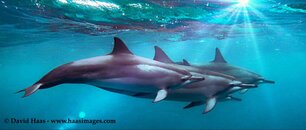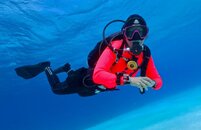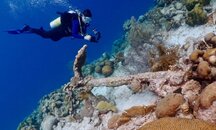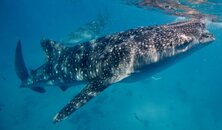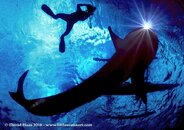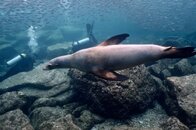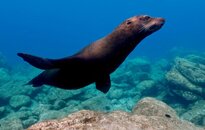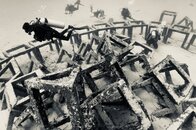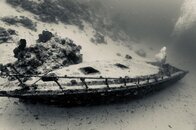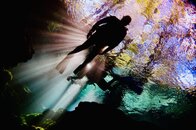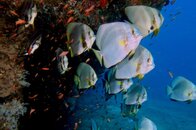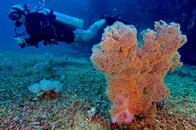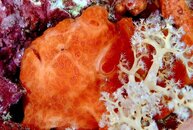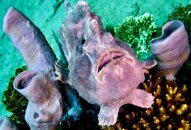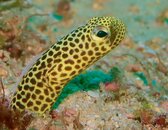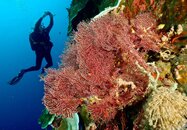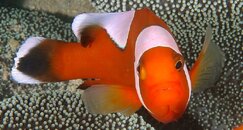Peter,
I tend to shoot 1'-4'. The WA shots were using a simple "pop on" Fantasea BigEye F Series "Air lens" which simply restores the Canon G7X II camera's 24mm equivalent focal length UNDERWATER. I can pop it on (it floats) and pop it off my Fantasea housing to shoot closer fish photos or macro.
There are various other WA "wet" lenses allowing even wider views and my choice is a glance between size, weight and cost.
For ISO I try and shoot between the lowest 125 to 200. Maybe 250 - 320 - 400 early in the day or late if ambient light is low.
Shutter speed 1/125 or higher (my 1" sensor compact camera can shoot synched flash up to 1/2000!)
Aperture maybe f5.6 for a general f-stop. The close ups I might close down to f6.3 - 8 maximum. At F8 on a compact 1" sensor camera it's something like f22 on a big SLR (not sure.) This can introduce DIFFRACTION (blurring around edges) with very little additional depth of field going to such a higher f-stop number.
I've found putting the AF (AutoFocus) point on what you want the prime focus to be is more important than depth of field but that's me and my style of shooting.
Finally, being as I mentioned a super lazy photographer I shoot a fair amount of ambient light images these days.
White balancing in camera or using a Magic Filter (
M A G I C - F I L T E R S) allows you to dive even easier

Granted this is more for wide angle or medium framing shooting. It requires learning to evaluate what light is present versus shooting with a strobe(s).
The ambient light images look "different". Some always will prefer the brightly lit crispness of strobe lit photos but it can be another tool that's fun to try.
There's nothing more wonderful than diving with just your housing and observing where and how available light is illuminating the underwater world!
Traveling with less gear means being able to afford diving more often at least for me

Full disclosure; I am a Fantasea dealer and actually use the equipment I sell.
For housings and WA plus Super Macro lenses email me directly:
davidhaas4596@gmail.com
David Haas
Haas Photography Inc.
